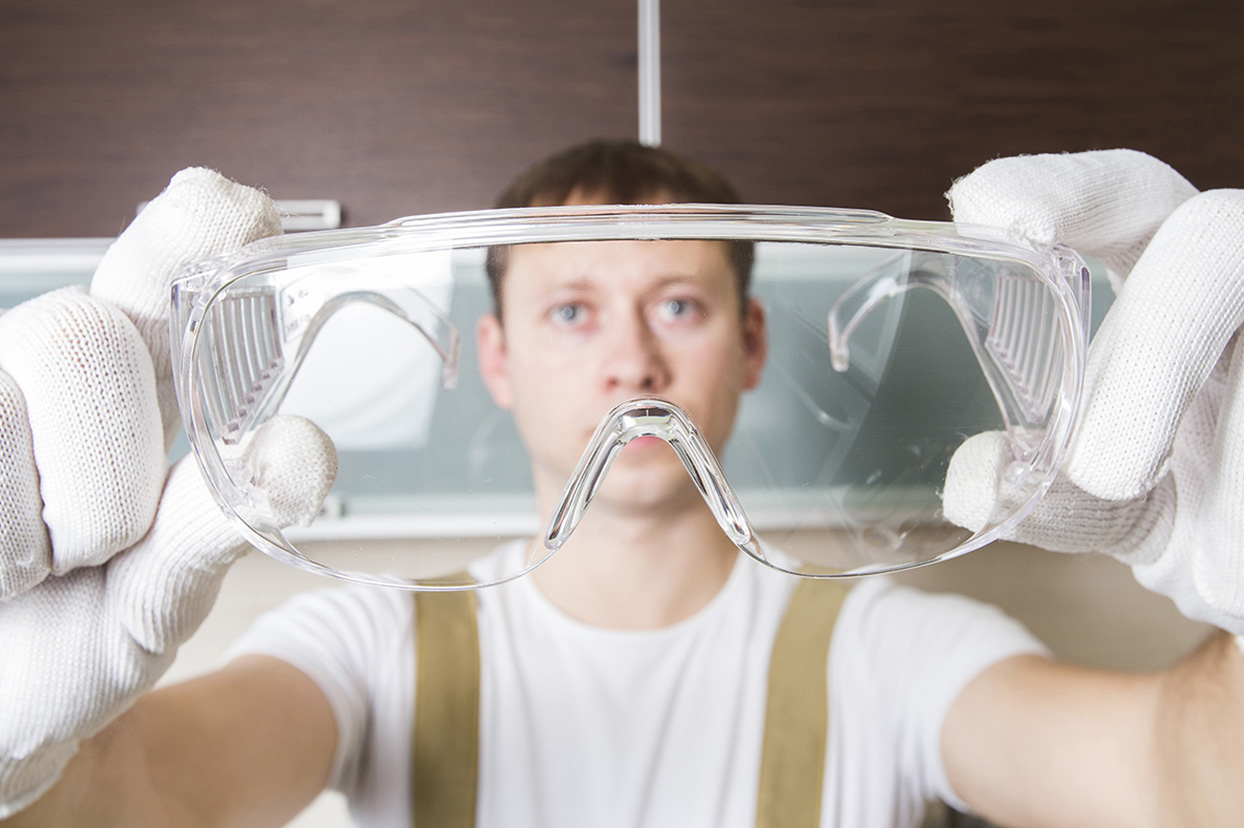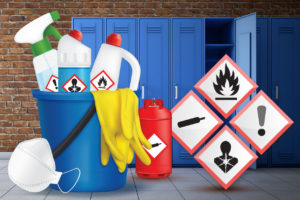February 27, 2019
How to prevent eye injuries in the workplace
An estimated 2,000 eye injuries happen every day in workplaces across the United States. According to the Occupational Safety and Health Administration, workplace eye injuries have a yearly cost of $300 million in lost production time, medical expenses and workers’ compensation costs.
What to watch out for
Nearly 70 percent of eye-related accidents result from flying and falling objects or sparks striking the eye. Particles such as dust, cement chips, metal slivers and wood chips can be sent flying following the use of a tool, or else can be blown into the eye by the wind or fall from above a worker.
Other dangers include penetration from sharp objects, such as nails, staples or slivers of wood, and exposure to chemicals.
Before removing eye protection, brush any particles out of your hair and eyebrows that may have gotten trapped while you were performing the job.
It’s also important to maintain your eyewear. Dirt and scratches can reduce vision, cause glare and may not offer full protection.
What eyewear should you use?
There are several kinds of eyewear that offer different protection. Make sure to use eyewear that is appropriate for the job:
- Side shields are required when there are flying particles
- Face shields are required when grinding, welding or removing slag
- Splash goggles or face shields are required when pouring chemicals
Over-the-glasses eye protection is available for workers who wear glasses.
Emergency eyewash stations
All employees should be aware of the location of emergency eyewash stations. If your eyes come into contact with foreign particles or chemicals, immediately use an eyewash station.
To use the eyewash station, active the flow and being to flush the eyes out with water. Use your fingers to keep your eyes open as wide as possible, but only if your hands are clean. If they aren’t, have a co-worker hold your eyes open for you. Roll your eyes as much as possible to remove loose particles or wash chemicals from under the eyelids. Rinse off your face as well.
It will feel uncomfortable, but it’s important to flush the eyes for the recommended amount of time, generally between 15 and 30 minutes. After you finish, notify your supervisor and seek medical attention.
Pay attention to any chemicals you may use while working. The Material Safety Data Sheet will list which chemicals may cause irritation, burns, corneal damage or blindness. Container labels or tags will warn for chemical burns or state that the material is corrosive, caustic or toxic.
While it’s important to know how to use an eyewash station, remember that the best way to prevent damage is to use protective eyewear. Approximately 90 percent of injuries are preventable with the use of proper eye safety.



